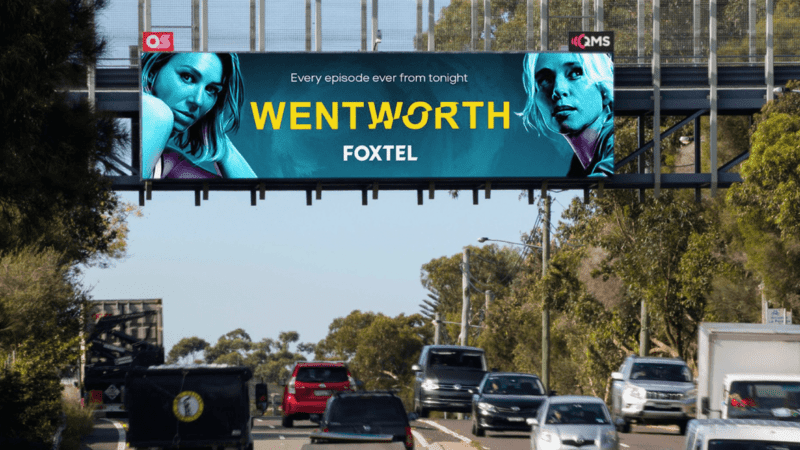Group M
The increasing integration of data and technology into digital outdoor screens has created new ways for agencies to market their clients, as they attempt to precisely reach the right customers at scale.
This point was covered at Group M’s event at the Entertainment Quarter in Sydney, Entering The Next Era Of Outdoor Media: People Powered DOOH.
The interactive session featured leading minds in outdoor media and marketing to discuss how the evolution of data-driven thinking and the industry’s ability to understand movement more effectively has helped evolve outdoor media.
This proceeded GroupM Australia launching a custom-built, data-driven digital out of home (DOOH) planning and activation platform called Journeys, which enables advertisers to deliver audience-based DOOH campaigns across premium sites.
The tool allows Group M agencies Mindshare, Wavemaker, Essence, and MediaCom to leverage over 500 audience segments, over 2,300 points of interest, and millions of geo location-powered data points. This enables advertisers to link online and real-world behaviour, creating a more accurate view of the consumer – with Group M saying that it is about ensuring that they are reaching people, not panels.
The platform builds on technology and capabilities introduced when GroupM launched its Programmatic DOOH Marketplace, Sightline, in Australia 18 months ago.
At the event Mediaweek spoke to Ryan Menezes, Group M’s chief transformation officer, as well as James Lambert, Head of Sightline, to talk about the future of people powered DOOH and how Group M is making advertising better for people.
Lambert said that this technology has been evolving for the last 10 years, with Covid speeding up the ability to be more data and audience lead. This helps the teams in understanding where audiences are going – or where they weren’t going.
JL: “It’s pushed the outdoor channel to be more fluid than it was previously. It’s moving in the right direction and taken advantage of those other digital channels. Whilst not trying to be a digital channel, it has taken advantage of the tech capability and made out of home into something it’s never been previously.”
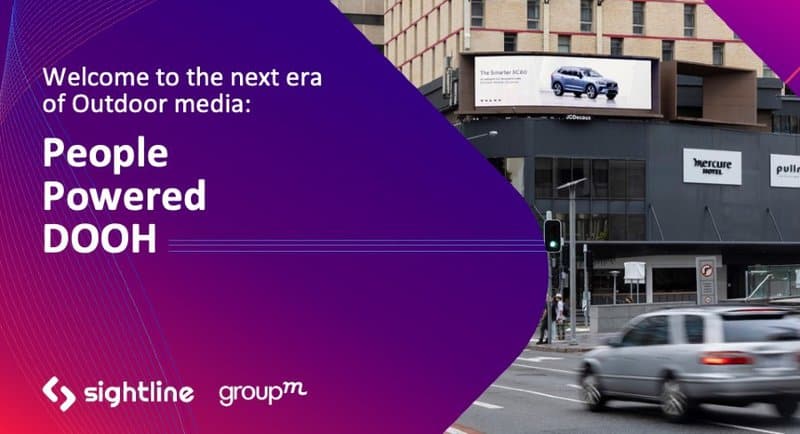
Menezes said that the industry and Group M have been through an interesting time over the past two years. Everyone has taken the time to refine all of their business models to ensure technology and data become a core of what they’re trying to achieve.
RM: “Coming back into a fluid workforce, what we’re starting to see is some of the costs of digital are going back and plateauing. The second that inventory comes down, the cost goes up. Clients that were reliant on some of these channels are now looking at platforms that have come a long way over the past two years. These platforms can provide a huge amount of insight into how many people have been exposed across their core demographic by looking at location-based signals and triangulation to understand what the demographic psychographic is.
“We are seeing clients who in the past were heavily investing in out-of-home and are now starting to use digital out-of-home. A huge amount of our clients on Sightline have never used out-of-home. They’ve overinvested at times in digital and they’ve started to use this as an extension platform to be able to deliver a greater impact.
“Our big focus around people not panels is helping clients better understand the insight that comes out of who’s being exposed to their panels, and using that insight to be able to custom tailor messaging. Ultimately, we want to make sure that attention is going to be high.”
Menezes said that an important part of building this marketplace was forming key partnerships with outdoor companies like oOH!media and industry bodies such as the OMA.
“We wouldn’t have been able to do what we did if it wasn’t for every one of our partners in terms of creating this marketplace – one of the largest in Australia. The data that is powering these journeys, a lot of that has come from out-of-home providers.
“That’s the reason we’re working with all the industry bodies. We have the OMA front and centre because we’re working in collaboration. The research that they are doing with MOVE and MOVE 2.0 creates a strong foundation and we want to build on that. The greater insight and intelligence that we have can further drive capability.”
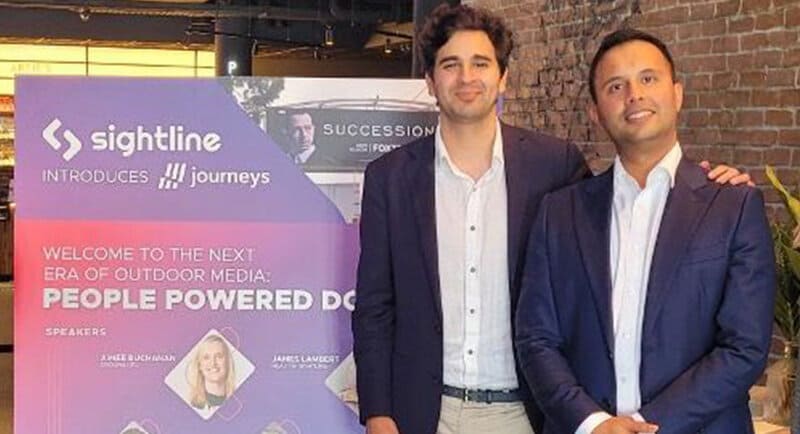
James Lambert (L) and Ryan Menezes (R)
Educating the sector on DOOH
When asked about how to best educate the industry sector on the value of digital out-of-home advertising, the pair said that they have learned the hard way the last few years how to best communicate the channels’ virtues.
RM: “Initially, when we wanted to build a data centred business. We wanted to talk digital, data and technology, without realising that the core audience is the traditional out-of-home buyers. What we realised is that our audience is not the digital audience. It’s a small part of our audience, but the biggest part of our audience is the out-of-home buyers.”
JL: “Whilst we are trying to have the right conversations with those traditional out-of-home natives, we do want to make sure that we are going on the journey with the digital and programmatic natives. If those two poles can work together, it allows us to open up so much more opportunity than ever before.
“Now we can optimise out-of-home campaigns, whereas before it might have just been a set placement over a set duration of time. The ability to do really granular reporting is enhancing what we can show our clients with their out-of-home campaigns. The fact that we can start to take an out-of-home campaign and make it work well with display, mobile or other digital channels is an exciting opportunity.”
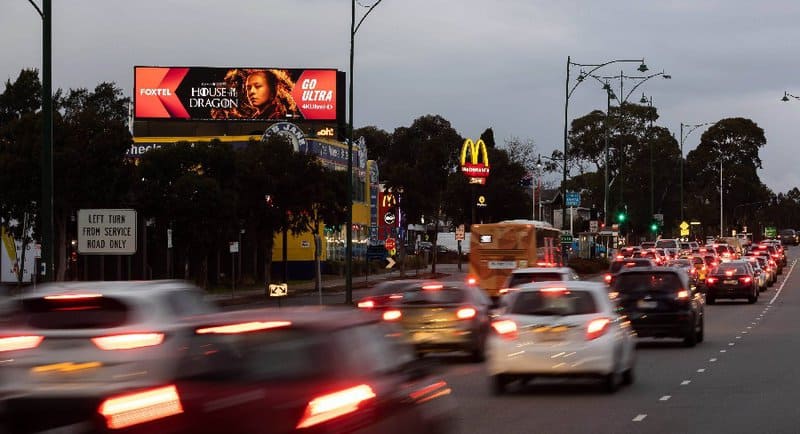
DOOH and pragmatic advertising
When asked about criticism of programmatic advertising in the sector, the pair said that it is about understanding the role that technology can play in a strategy, while knowing the correct core principles.
JL: “In my experience, nothing has cannibalised direct out-of-home campaigns because we’ve been smart about it. It’s not there to replace a direct buyer or a static buyer. Those channels are amazing for what they do. Programmatic out-of-home is just more of an audience led approach, which is what out-of-home has been trying to do for a long time. It’s not there to replace anything, it’s helping to find the right opportunity for any particular channel. Out-of-home works well in a wider media ecosystem from a traditional standpoint, same with programmatic.”
RM: “Our core principles are always going to be focused on openness, transparency and accountability. The digital out-of-home space is very unique as opposed to something that you’ve seen in the digital programmatic ecosystem. The supply side is very clean. If you look at the digital ecosystem, you have many supply side platforms that plug into millions of partners, all of them individually. In the digital out-of-home space, you have only got a few supply inventory partners and they’re very clear.”
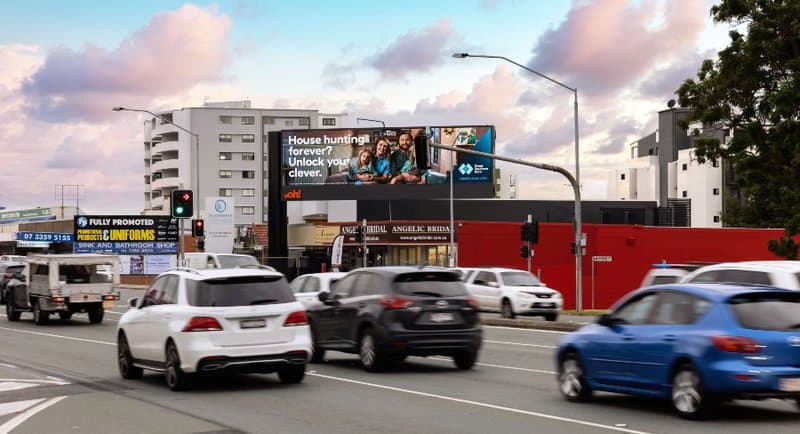
How Group M ad Sightline balances DOOH with static ads
When asked about the balancing act of digital out-of-home and traditional out-of-home advertising, Lambert said that it was about working with clients to ensure that a campaign is not carving into what a static campaign would do.
JL: “It’s not there to replace anything. It’s about looking at it and deciding that static might be about big brand building, while programmatic or digital out-of-home might be more about flexibility, following the audience and pivoting. These play completely different roles, but it’s case by case, remembering the role of every single out-of-home environment and every single out-of-home screen. Added into that mix is what’s the role of tech enabled out-of-home versus traditional static out-of-home and asking how they work well together.”
